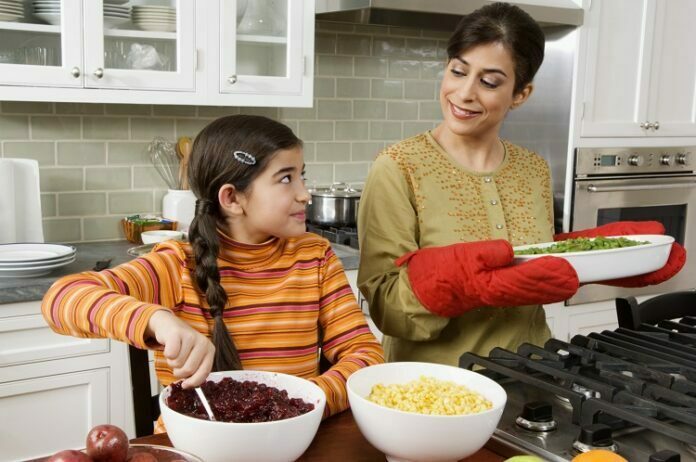Michelle asked me to put together a little post about the kids in my kitchen after I commented on her some-time-ago entry regarding what young children can reasonably do in the kitchen. In tossing around the idea, I thought it might be useful to highlight some of the things that helped me start cooking with my twins when they were two.
Although I’m talking up a few specific items here, there’s no paid endorsement involved and your mileage may vary. What you don’t need is to spend a lot of money or redo your kitchen. Obviously, every home and every family will have unique circumstances and needs. These were important for me and my own children.
A kid-size table. It’s really important for children to have a sturdy surface that they can easily reach, bearing in mind that they are often more comfortable standing to work. For us, an IKEA table & chairs similar to this worked really well (it’s in retirement now, but we’ll pull it out again when our new baby is old enough to need it). This surface could also be a Lego or train table with toys removed and flipped to the flat side (cover w/newspaper or a dedicated tablecloth if needed), or the kitchen table or counter if you have a way to get the kids up there. These days my children (first-graders) do a lot of their kitchen work standing next to a counter-height stool, with the bowl or cutting board or whatever on the seat.
Sturdy utensils. You want tools, not toys (though if you can find something that’s scaled down in size without sacrificing quality, it’s worth considering). You don’t want your tools to fall apart, and you definitely don’t want to have to worry about your preschooler breaking something in his/her enthusiasm. Let them use the regular utensils that you use, with appropriate precautions in place.
Aprons or messy shirts. Aprons are cute, and I’m a big fan of the chef’s hat concept, but a largish T-shirt or smock for your child to wear when doing messy work (not limited to cooking) will clear your mind and let your kid focus on the task at hand.
Good resources. We have cooked a zillion times from Mollie Katzen’s Salad Peopleand Pretend Soup cookbooks. They feature a standard copy of each recipe for adults to read and use for prep, and then each recipe is transcribed into a picture format on two pages, so that children who can’t yet read are able to do the cooking themselves. The helpful adult is really the sous chef. We just got Katzen’s Honest Pretzels, which is for older children who are able to read and follow a recipe, and I’m excited to dive in. I also really appreciated Mary Ann Kohl’s First Art, which focuses on toddlers and twos; it helped me focus on process and to understand what my very young children were capable of in terms of motor skills.
Preparation. Have your ingredients, utensils, dishes ready to go. Premeasure, unless your child can handle that and would benefit from it. If you have to scramble around finding things, you will lose your audience. Don’t forget a damp cloth in a bowl, for wiping sticky fingers without having to shift gears too dramatically. When you’re working with more than one child at a time, it’s helpful (though not strictly necessary) to have more than one set of measuring cups and spoons available.
Patience. I have one child who wants to finish the project at all costs, always, and one child who has about three minutes to devote to any given thing before taking off. Let them go when they need to go, and be prepared to finish it yourself if necessary. This is supposed to be fun for them, remember? Understand that most children will probably want to smoosh fingers into the flour and smell the nutmeg and eat the sugar with a spoon. (Use your own judgment on that one.) Cooking with children takes longer than doing it yourself because they are exploring as they go; allow lots of time for the process and for cleanup. I’ve found, too, that preparing the food is not a guarantee that the child will EAT the food. My son loves to make glazed carrots, but he doesn’t really like eating them; for a long time, my kids would happily spin the salad greens and complain mightily when the salad appeared on the dinner table. Have them try it and move on.
We enjoy cooking together, and I’m seeing that my children are more adventurous about food as they grow (they do eat the salads now, for example). I hope this information helps someone else get started, and I’d love to know: What has been useful in your kitchen as you work with your children?




